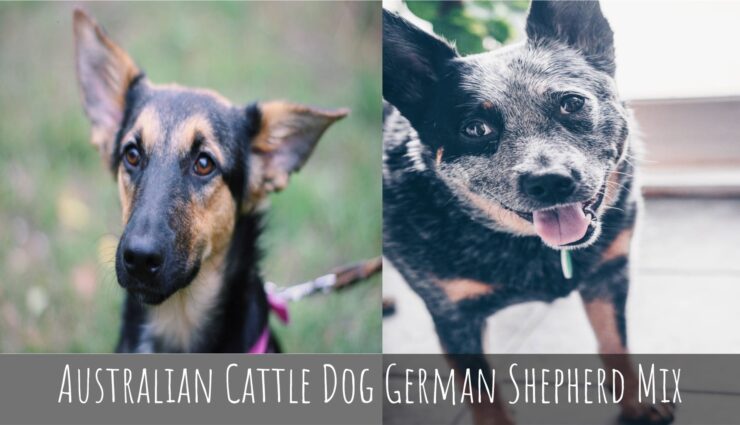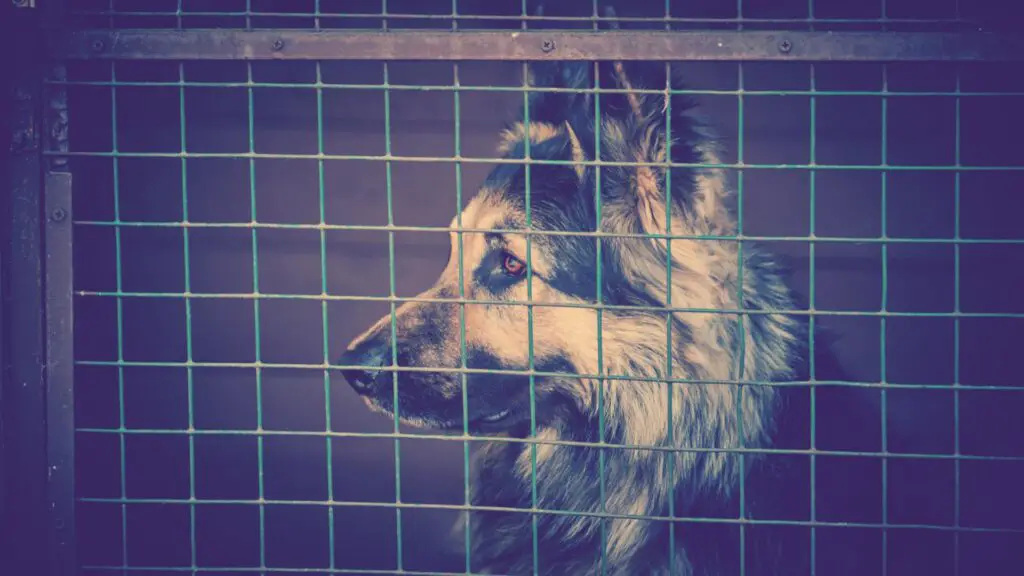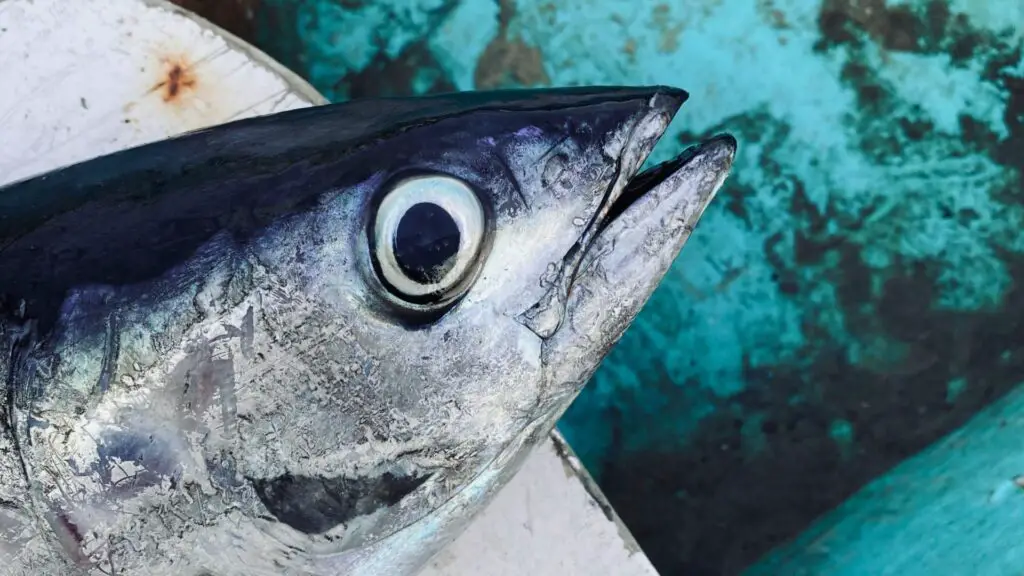The Australian Cattle Dog German Shepherd mix is a hybrid dog that results from crossbreeding the Australian Cattle Dog and the German shepherd dog.
This unique breed mix that most people don’t know about is also known as the blue heeler German shepherd mix.
Both terms the Australian cattle dog German shepherd mix and the Blue heeler German shepherd mix are often interchangeable.
In this article, you will learn a lot regarding this breed mix. You will know of its appearance, traits and exercise needs.
Consequently, by the end of this article, you will be in a better position to know whether this dog breed mix will be a perfect addition in your family.
Will all that said, stay tuned to learn more.
The Australian Cattle Dog German shepherd Mix
As earlier stated, this unique breed mix results from breeding a German shepherd and the Australian cattle dog.
So having a better view of this hybrid dog, lets first look at each parent of this breed mix separately.

The Australian Cattle Dog (ACD)
The Australian Cattle Dog is a well-built, strong and agile breed. Again, this dog breed has heights ranging from 17 to 20 inches at the shoulders.
This breed was first known as the Australian Heeler, although it is still called the Blue or Queensland Heeler to date.
An interesting fact about the Australian Cattle Dog is that it is born with a white coat, which turns red or blue-gray with time.
Also, the ACDs are work-driven and excellent hunters, chasers, and livestock movers. Your ACD can be a perfect running partner as the dog has a lot of energy.
Consequently, the Australian cattle dogs are loyal, intelligent, ever alert, and cautious of strangers.
The ACD also needs some work to do to release any pent up energy. For this reason, if you do not give your ACD some challenges, he is likely to develop boredom and get into mischief. The American Kennel Club (AKC) recommends that as an ACD owner, you engage your dog in work, gaming, and other regular exercising activities.
Being a high-energy dog, the Australian Cattle Dog expresses the desire to be active and busy almost all the time. Therefore, his boundless energy ought to be controlled and directed towards work and physical exercises.
The Australian Cattle Dog has a high commitment to his/her master and family. The breed devotes himself to one person in the family (especially the one feeding him) while bonding less with the rest.
The Australian Cattle Dog is mouthy, often because of its herding instincts-(They often control cattle through nipping their hind legs.)
Having stated that, you probably could be wondering if this breed is an appropriate dog to purchase for petting. Here is some information that will change your perception of the dog breed.
Can The Australian Cattle Dog Make A Good Pet?
Although the Australian Cattle Dog bred often works as a herder, it also makes a good family dog.
However, he relates best with children if he grows with them at home and accepts them in the early development stage as his household members.
The only challenge is that the ACD tends to be mouthy — even to nip and bite — as he is adapted to ‘herding‘ them with sharp nips or even bite them when the children play too roughly.
Besides, if you decide to purchase an adult Australian Cattle Dog who has had little or no exposure to many people, especially youngsters, this dog may tend to display aggressiveness.
In other incidents, the ACD tends to be suspicious of children since they don’t act like adults. Children’s playful behavior makes the dogs perceive them as a threat.
However, this should not deter you from acquiring your Australian Cattle Dog since these problems are fixable by carefully socializing the Australian Cattle Dog puppy with children and training the dog on bite inhibition.
Like other dog breeds, ACD owners should invest time teaching children ways to interact with such a dog and keenly observe the interactions between dogs and youngsters.
History of the Australian Cattle Dog
The Australian Cattle Dogs dates back to the 19th-century when Australian settlers bred them primarily to herd cattle on large ranches. The breed was very fundamental for the settlers as they contributed to ranchers expanding the Australian beef industry.
In recent breeding, the types of Australian Cattle Dog produced result from various breeding and crossbreeding. The Australian livestock farmers wanted a hardy dog to coupe the country’s harsh climatic and working environment. Australian ranchers used to import dogs from England before the ACD emerged.
However, these breeds weren’t up to the job for which they were expected to perform. Therefore, they were bred to the native Dingo. Later, due to numerous breeding by many ranchers, the ancestors of the modern Australian Cattle Dog were created.
Ranch owners and drovers preferred blue-colored dogs, which resulted in dog breeds identified as the Blue Heelers. This dog breed was popular in cattle ranches of Queensland, where they acquired the name Queensland Heelers or Queensland Blue Heelers.
In 1893, Robert Kaleski specialized in breeding the Blue Heelers, basing its standards on the Dingo. Kaleski believed that this breed type suited the Australian climatic and working environment.
This explains why the modern Australian Cattle Dog has much resemblance to the Dingo, excluding the color). The breed standard was approved in 1903 by the Kennel Club of New South Wales.
Following a series of class tests in the miscellaneous class, the Australian Cattle Dog was officially accepted and registered by the American Kennel Club in May 1980.
Relating With Other Domestic Animals
If you have raised your Australian Cattle Dog with other dogs at home from their puppyhood, you will agree that they get along very well.
However, due to the dog’s commitment to a single individual in the family, there can be jealousy and competition for affection and attention between the Australian Cattle Dog and other household dogs.
When it comes to interaction between the ACD and other small pets such as cats, the previous usually consider the pets to be his prey. But if they are raised together from his puppyhood, he’ll probably accept them as members of the family and let them be.
However, if you introduce your ACD to other small pets during adulthood, the chances are that the dog will chase, bite, or even kill the animals.
This is because the breed has a strong prey drive. The dog’s fascination with small animals such as squirrels, cats, and other small animals makes the dog breed a threat if not raised from puppyhood with the other pets.
However, in general, the Australian Cattle Dog is friendly and very protective of his family and master, while he is wary of strangers.
Caring For Your Australian Cattle Dog
It could be a challenge to care for your ACD if you do not have time to exercise with him. The majority of these breeds are hardworking and therefore are best suited to surroundings with a lot of physical and mental stimulation to utilize his boundless energy.
Nevertheless, the Australian Cattle Dog should never be on its own for long, nor are they meant to live in apartments. The dog is playful and very destructive when left alone or bored.
If you consider acquiring this dog breed, first ensure that you provide a suitable living environment that matches his high energy and intelligence.
Socializing the Australian Cattle Dog at an early development stage helps your dog grow up as a well-rounded dog. Your dog must also learn not to put his mouth on people or other small animals, but only on appropriate chew items, such as sturdy toys.
The German shepherd Dog
The German Shepherds have a more wolf-like resemblance than other dog breeds. Their physical appearance makes potential GSD owners relate the breed to the wolves.
The German Shepherd Dogs are famous for their intelligence and working capacity. They have unmatched devotion and courage.
An outstanding feature that attracted breeders of the Australian Cattle Dog German Shepherd mix in the GSDs is their excellence in performing almost everything they have learned through training.
The GSD performs essential tasks such as guiding and assisting the disabled, performing police and military services, and herding livestock in ranches.
Additionally, the GSDs conducts searches and rescues, detecting hard drugs, and makes a perfect faithful companion.
General Appearance of the GSD
You cannot mention the origin or history of the German Shepherd Dogs without mentioning Captain Max von Stephanitz.
Von Stephanitz made it his mission to create a dog breed ideal for working (herding). Von Stephanitz and other breeders with similar ambition tried different strains of dogs from Germany’s northern and central districts. As a result, they created the ancestors of the contemporary German Shepherd Dogs (GSD).
The GSD stands a height of up to 26 inches at the shoulder. Consequently, it presents a picture of a smooth and gracefully curved rather than an angular dog.
The German Shepherd Dogs are loyal, courageous, and always ready to risk their lives for their masters. These features make this breed stand in the front rank of canine royalty.
A Comparison Table (The German shepherd And the Australian Cattle Dog)
| German shepherd | Australian cattle dog | |
| Group | working | Herding |
| AKC Rank | 2 | 55 |
| Size | 22-26 inches | 17-21 inches |
| Weight | 50-90 pounds | 30-45 pounds |
| Coat type | double | Double |
| Hypoallergenic | no | No |
| Exercise needs | high | High |
| training | Easy | easy |
| barking | low | Moderate |
| Life span | 10-13 years | 12-15 years |
Characteristics of the Australian Cattle Dog German shepherd Mix
Having gathered detailed information of the Australian Cattle Dog German Shepherd dog’s parent breeds, in this section, you will find information on the appearance, temperament, grooming, health issues, and trainability.
The Australian cattle dog German shepherd mix is a working dog possessing a lot of power. It is canny, smart, firm, sturdy, and devoted to the tasks allocated to it as a herd guide or guard dog. Being an intelligent breed, the Australian Cattle Dog German Shepherd Dog thrives best under the custody of a strong and experienced master/mistress.
Just like other dogs, the Blue Heeler German Shepherd breed inherits the traits of both its parents.
However, you can’t tell the exact features the breed will inherit from one parent over the other while it’s still young.
Physical Appearance
Imagine yourself conducting a crossbreed between a German Shepherd Dog (GSD), one of the world’s most famous and beloved domestic animals, and a very hardworking Australian Blue Heeler. The result will be a one-in-a-million hybrid dog.
As it is with all mixed animal breeds, the Australian Cattle Dog and German shepherd mix acquire many characteristics from one of the breed parents. They can take the resemblance of a German shepherd, an Australian Cattle dog, or take a combination of both.
Both the Australian Cattle dog and the GSD are double-coated. A typical German shepherd has a medium-length coat, whereas the Australian Cattle Dog has a short coat. The resulting breed mix contains either of the parent’s coat type.
The crossbreed’s body is also more muscular, weighing between 35 to 90 pounds and 18 to 16 inches tall.
Australian Cattle Dog German shepherd Mix Temperaments
If you are a GSD owner, you will agree that the breed conducts itself in a way that portrays its intelligence, courage, and confidence. On the other hand, the Australian Cattle dog has a personality of alertness, curiosity, and playfulness.
A combination of the two breeds gives rise to a breed displaying traits of bravery and strength. The Australian cattle dog German shepherd mix is also very devoted and protective of their families.
Further, his protective nature makes the Australian cattle dog German shepherd mix a perfect guard dog. Additionally, this breed mix tends to be stubborn.
- The perfect guard breed mix (Australian cattle dog German shepherd mix)
Since the German Shepherds and Blue Heelers are famous for their bravery, strength, intelligence, athleticism, and loyalty, there is no doubt the breed is a perfect guard dog.
Energy Levels and Exercise Needs of the Australian Cattle Dog German shepherd Mix
As from its parent, this breed mix has high energy levels. With that, it always likes to have a job to do.
Give this breed mix 45-90 minutes of exercise time a day.
Also, use physical and mentally stimulating activities to quench this dog’s exercise needs.
Grooming Needs
Your Australian Cattle Dog German Shepherd mix might not require frequent grooming if he inherits the coating of an Australian Cattle Dog–whose hair is short.
However, if the breed takes after the German shepherd mother’s coat, which is characterized by long hair, routine grooming is essential.
This breed is a heavy shedder that loses much of its undercoat. Therefore, in such periods, you need to brush them daily to keep their coat in excellent condition.
Also, remember to brush its teeth thrice a week. Consequently clip the nails short, by using a friendly nail clipper.
Australian Cattle Dog German shepherd Mix Diet
This breed mix will thrive well if given high-quality kibble. Three cups of dry kibble per day will prove sufficient.
If this is your first time owning this breed mix, you can consult your vet on the best feeding guideline for this dog.
Health Issues of the Australian Cattle Dog Shepherd Dog Mix
The Australian Cattle Dog Shepherd Dog Mix has an approximate lifespan ranging between 11 to 14 years. Generally, this breed mix is a healthy breed being a crossbreed of two strong and healthy dogs.
However, this breed is still susceptible to health conditions that they may inherit from their German shepherd parents.
Some of these challenges include those unique to the German shepherd, including dysplasia, epilepsy, and bloating.
Frequently Asked Questions
Is the Blue Heeler German shepherd Mix Easy to Train?
The Blue Heeler German Shepherd mix breed is naturally intelligent and obeys commands. Based on this characteristic, this dog breed can learn to perform any task.
However, due to their stubbornness, the Blue Heeler German Shepherd mixes must be trained as early as possible – in their puppyhood.
The most effective type of training is by using positive reinforcement, which should involve socializing.
The Dos and Don’ts While Training your Blue Heeler German Shepherd mix
- As the owner, you ought to be a firm leader for your dog to learn fast and be obedient. You must be authoritative and remind the dog who is in charge.
- Avoid using punishment while training your dog. The negative disciplining methods will make this dog more aggressive and violent towards visitors.
- Teach the dogs simple commands such as sit, stop, stay, and come. These simple commands are essential in preventing the breed from attacking visitors.
If you are house-training your Australian Cattle Dog German Shepherd Mix, employ crate training as it proves to be successful, especially for puppies.
Is the Australian Cattle Dog German shepherd Mix Right for Me?
If you are an experienced dog owner, then this dog is right for you. With that, this dog requires a firm handler who knows how to handle energetic dogs.
Where Can I Get the Australian Cattle Dog German shepherd Mix?
You can get this breed mix from a reputable breeder or adoption centers. First, check-in rescue centers before purchasing one from a breeder.
Conclusion
In conclusion, the Australian Cattle Dog German Shepherd mix results from a crossbreed between an Australian Cattle Dog and a German shepherd dog.
The breed is famous for its intelligence, loyalty, and protectiveness.
If you desire to own this hybrid dog, you should have background information and experience, in training such pets.
What’s your thought can you have such a breed mix in your house?





